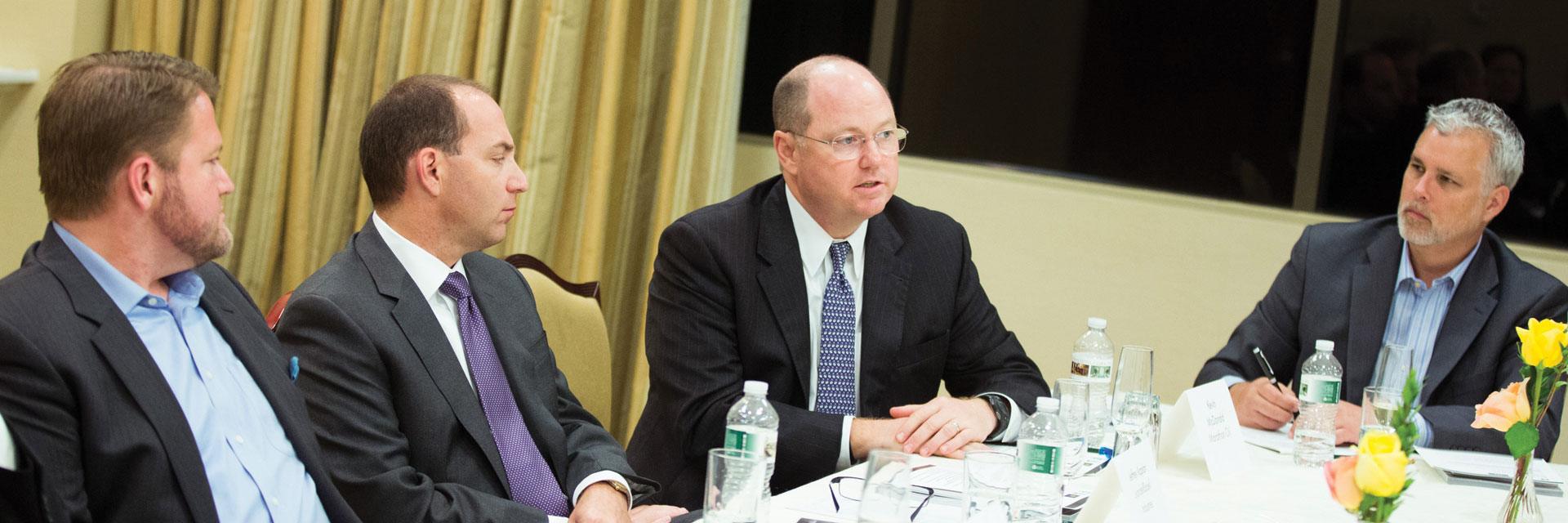Strategic benefits
These days, however, the landscape is not merely one of ‘greed is good’ and ‘may the best man win’. Increasingly, today’s companies have to show a good balance sheet aligned to ethical and fair business practices and policies which maximise their earning potential with all tenets of society. This is not only for investors and shareholders, for whom ethical and social responsibility issues are much more of a priority than previously, but for customers, who vote with their feet and wallets and for whom the power of social media can make unfair practices abundantly evident, as well as for existing and potential employees.
For our respondents and interviewees in this report, who constitute in-house lawyers and business people from a wide cross-section of leading global companies, diversity and inclusion simply makes good business sense. Internally it is about having access to the best range of talent. Externally it’s about being able to appeal to the widest customer base and reflect the personal reality of one’s customers. Both of these intersect quite heavily; Raphael Mokades, founder of Rare Recruitment, the first diversity-focused recruiter, summarises it thus:
‘There are four benefits, broadly speaking. One is the market: for example, if you are selling a hair product for black women, you wouldn’t have only white males on the team. That approach is no good, because you have to understand the market. Talent is another: if you think talent is evenly distributed and you don’t hire women, then you are missing out on 50% of the talent. Another benefit is reputational: it makes people feel good about the firm they work for, which is good for the company. It keeps people being productive and it makes people happy to procure from you, such as governments, clients and companies. The other is legal benefits, because you are much less likely to get sued by an aggrieved minority person if you can prove their being aggrieved has nothing to do with their minority status.’
Companies will express this in different ways depending on their business model and to what extent they are customer-facing versus B2B. The wider the potential customer base, the greater the imperative truly to embrace diversity. Multinational consumer goods company Unilever is a clear example of this. Its Gender Balance Plan is a key focus for the company, but the basic rationale goes back to the fundamentals of what the company does. As general counsel, Ritva Sotomaa explains: ‘Two billion people use our products every day but women are our main consumers as, in regards to our products, the majority of the buying decisions are made by women. It is business sense to make sure we reflect that.’
or media company ITV, the strategic imperatives have been there for a long time. As one of the main TV channels in the UK, there’s an imperative to reflect the cultural diversity of the UK. But for a number of years, media companies like ITV have also been trying to combat the perception of the media in general as a playground for the rich and privileged.
‘It was really like pushing an open door,’ explains legal director Barry Matthews, ‘because we are progressive in the field of diversity as a matter of course.’ Matthews has been instrumental in setting up the Legal Social Mobility Partnership (LSMP), an initiative which promotes social diversity and opportunities for less-privileged students to access careers in law and this fits in nicely with other initiatives already underway at ITV. ‘There has been the criticism of the media for a number of years that it is filled with those who can afford to intern for free. We have an award-winning apprenticeship programme across all of our business areas and have committed to diversity across the piece through our social partnership initiative and commitment to the living wage. Hence when we started the LSMP, there was already a strategic will to promote diversity.’
Diversity also has a solid strategic case from a legal point of view, as Michael Coates, head of UK legal at Shell, told us ‘The legal issues Shell comes up against cut across legal systems and jurisdictions, so we need people to understand how these systems operate over multiple countries. Having diversity… is a clear business driver for us.’
Strategic benefits of diversity initiatives and having a diverse workforce?
Most of us are well aware of the business case for diversity. There are a number of research pieces which clearly show diverse organisations are more successful; and that people are more productive and loyal to their organisation when they can be themselves at work. Research also shows that diverse teams are only successful when they are led and managed well.
As the world’s first truly global law firm, Baker & McKenzie is inherently diverse. Our client base typically comprises large multi-nationals and blue chip organisations, who value our ability to adapt to different cultures, our innovation and the diversity of thought we bring. We believe a diverse workforce is a stronger workforce and better placed to meet the needs of our clients and the communities we operate in.
Inclusion and diversity are core strategic objectives for Baker & McKenzie. Our approach includes a positive stance to inclusive leadership and active education and engagement of partners and leaders across the firm with a focus on hiring, nurturing and retaining diverse talent.
Part of what this means is taking diversity and inclusion away from the notion of ‘being nice’ and giving it some teeth that makes the stakes higher. For our interviewees focused on initiatives, what was driving their companies’ involvement was the fact it could come down to basic key performance indicators and profit and loss, as well as market perception. Those key issues for 21st century businesses make diversity and inclusion a fundamental issue and can therefore drive top-level engagement, which all interviewees agreed was pivotal to truly ensure the success of initiatives.
For Tim Hailes, Managing Director at J.P. Morgan and a long-time advocate of LGBT issues, this is the key driver for his own efforts and that of the banks.
‘I am keen to ensure that we focus on the fact that we firmly contextualise this in work, about the success of the bank, to help people fully contribute and succeed in their jobs, attracting talent; it is not about being especially “nice” to gay people or supporting worthy causes that have little to do with the day job. There are many things out there that people can support in their own time, but where this has a material impact for J.P. Morgan is in the context of the business.’
And that is not merely reflecting the reality of their consumer base, but increasingly for companies, it is about doing things differently and innovatively. To do that, ‘group think’ definitely has to be avoided to allow diverse experiences and diverse identities to become part of a creative and innovative drive. Funke Abimbola is general counsel for UK and Ireland at pharmaceutical company Roche. In an area like pharma which constantly pushes the boundaries, diversity of thought is the end game. ‘If you have more diverse thinkers, then you will be problem solving in a very different way, across all disciplines. We are a very innovative company at Roche and the challenge is to remain innovative, because this is a crucial part of drug discovery – we need innovation at every stage and innovation only happens if people look at a problem in a different way’.
This sentiment was echoed across our interviewees and respondents to our survey. To be truly competitive, creative and innovative, companies need to avoid group think. Companies need to stay relevant and to demonstrate that relevance in a global market place which is by default diverse and not homogenous. Channel 4’s Prash Naik points to the innovative and creative benefits diversity of thought produces:
‘By recruiting from a more diverse group you will get people who think in different ways and who challenge convention. That brings different commercial opportunities and, potentially, more innovative ways of working. That has to make long-term commercial sense.’
For those who are still not convinced, research shows that more diverse companies are more profitable; even if your motives are purely Gordon Gekko-like greed, it still makes strategic sense. A 2015 McKinsey survey showed that ethnically diverse companies, were 35% more likely to out-perform against their national industry median average than non-diverse companies and gender diverse companies were 15% more likely to outperform by the same metric. (McKinsey & Company: Why Diversity Matters, 2015).
Role models
While initiatives are obvious ways for companies to show their support for diversity and inclusion and to really drive it, some might argue the open visibility of role models and successful role models are just as vital and, in some cases, may be even more important.
Successful role models can be the first sign to diverse candidates that it is possible to succeed in their chosen industry and can therefore be important in allowing candidates to act on their dreams before they may even know about the existence of particular initiatives or schemes. Role models who are authentic and for whom their own identity is indivisible from their success in their career send a powerful message.
Tim Hailes was one of the first openly gay men in investment banking in the UK. For him the power of what role models do cannot be underestimated.
‘Visible role models communicate powerfully that you can be successful and that being who you are is a non-issue.’ In J.P. Morgan this fact is very powerfully driven home by the overall group general counsel Stacey Friedman being openly gay.
The very existence of role models may not be enough if role models are not achieving success. Miranda Brawn started her career in investment banking and then trained part time to be a barrister and now works in-house for Daiwa capital. ‘For myself, being a mixed-race female with a career in a male-dominated industry has definitely been inspiring for others from diverse groups to go out and strive to have a successful career.’ She continues: ‘It is important for people to see themselves reflected in the people who make decisions and have careers in occupations that may interest them. For some people, their role model will not be a person who looks like them, it will be someone completely different who inspires them.’
Role models
Role models are critical. We know that for our junior associates, it is important that they can look to the top of our organisation and see people they can relate to – or those they wish to emulate. Some hold true to the ethos that you can’t be what you can’t see. We have found that millennials particularly want reassurance that it is possible to balance work and home life. They want and expect to see senior figures who have found ways to strike that balance.
Some of our senior figures do not naturally see themselves as role models. But in response to a growing need, we have become more proactive in celebrating success and in reaching out to senior figures to encourage them to share their own career journeys. We have sought to highlight role models in a range of ways; as mentors in our female mentoring circles scheme, as speakers at inclusion and diversity events and as bloggers in our series of inclusion and diversity blogs.
Sandie Okoro, general counsel at HSBC Global Asset Management, whose identity as black, female and working class, is inspiring on many fronts, says it is about ‘telling the truth of your story.’ For Okoro it is as much a sense of being true to yourself in not putting up barriers. ‘It’s hard to succeed in legal full stop. Ultimately there are as many barriers as you put up yourself; you can put up being female and black as an excuse or use it as a weapon of defiance.’
Interestingly, for a number of our interviewees, role models were seen as better than mentors due to the inspirational edge they give in inspiring people to live their dreams. Kristin McFetridge, chief counsel, portfolio products and standards at BT, runs the telecoms company’s mentoring programme in the legal team, but personally feels that role models play an even more crucial role than mentors. ‘I think they are critical. If you gave me a choice between a mentor or a role model, I’d have a role model. I don’t think anything can come close to looking at someone and saying, “I can be that person”.’
Lesley Wan, corporate counsel at Lloyds Bank, is the only lawyer on Lloyds’ inspiring role models programme. To her, role models build the blocks to get you to the place where mentoring can begin, but crucially, it is role models which allow you to make the most important initial steps into a new challenge. This is of personal as well as professional importance:
‘You can observe their traits and characteristics and decide which of those traits or characteristics you may want to embed and adapt to suit your needs and personality as you see fit. It’s like a form of informal mentoring without necessarily being mentored, and you get to pick and choose what you want to take away with you.’
But for many, role models equate champions, and having a visible figure at the helm is integral to truly embracing a culture of diversity in a way that is more meaningful than just box-ticking.
For all of our interviewees it is gaining profile and traction within organisational leadership that are key. Indeed, as exemplified by PageGroup, Channel 4 and Unilever, what can be most important is visible champions or role models who are not diverse. The UN’s HeForShe campaign is a high-profile example of this, recognising that gender inequality affects both genders and that change cannot be effected unless those who are perceived to be part of the problem also become the solution.
However, for some, this produces a discomfort which could be described as appropriation, if, as one source commented, it just becomes about ‘the dominant groups once again giving their side of the story and leaving no room for the diverse voices.’
It seems that striking the balance between championing by non-diverse leaders and making sure there are diverse leaders to be role models needs to be the goal. This also means that companies need to ‘walk the talk’ and be seen as being authentic, which were two strong themes which came up in our interviews. The ‘box-ticking’ approach, on the other hand, is something our interviewees were all sensitive to and had first-hand experience of.










